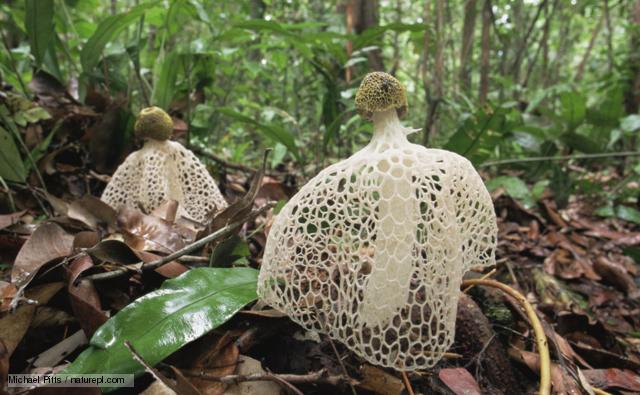Veiled stinkhorn: Red Data Book of Armenia

Category. DD – Data Deficient.
Brief description. Young, closed fruit bodies are 4–5 cm across, white, yellowish, eventually light brown, ball–shaped or ovoid, sometimes cylindrical, smooth, with white mycelium at the base. Cap is from 4 to 5cm in diameter, conical, varies in colour from dark green to olive–colour with mucous gleba. It has strong unpleasant smell. White, bell–shaped netting falls from beneath the cap. Receptacle consists of cylindrical, 10–17 x 2–3 cm stipe, which is dirty white, empty, covered with whitish or light brown volva at the base. Spore print is whitish. Spores are 3,5–4,5 x 1,2–2 µm, colourless, ellipsoid, smooth.
Distribution. Generally in Europe, Asia, Northern America, Southern Caucasus (Armenia). In Armenia it is rarely met, mainly in unique individuals. It is discovered in Ijevan floristic region in – ”Dilijan” National Park, in the surroundings of Papanino.
Ecological, biological and phytocenological peculiarities. It is met on the soil, in broad–leaved forests on the altitude of 1400–1600 m above sea level in the month of September. Saprotrophic fungi on humus. Young, ovoid fruit bodies are edible. It is used in folk medicine.
Main factors of endangering. Degradation or destruction of habitat ecosystems.
Nature conservation measures. In Armenia it is conserved in corresponding ecosystems of "Dilijan" National Park. It is necessary to carry out monitoring distinctive habitats of the species.
Suggestions
 The Ministry of Environment sent a letter international partners to draw their attention to the real danger of environmental disasters as a result of Azerbaijan's large-scale aggression towards the territory of Armenia
The Ministry of Environment sent a letter international partners to draw their attention to the real danger of environmental disasters as a result of Azerbaijan's large-scale aggression towards the territory of Armenia
 Vicia pisiformis: Red Data Book of Armenia
Vicia pisiformis: Red Data Book of Armenia
 Vavilovia formosa: Red Data Book of Armenia
Vavilovia formosa: Red Data Book of Armenia
 Trigonella capitata: Red Data Book of Armenia
Trigonella capitata: Red Data Book of Armenia
 Trigonella astroides: Red Data Book of Armenia
Trigonella astroides: Red Data Book of Armenia












